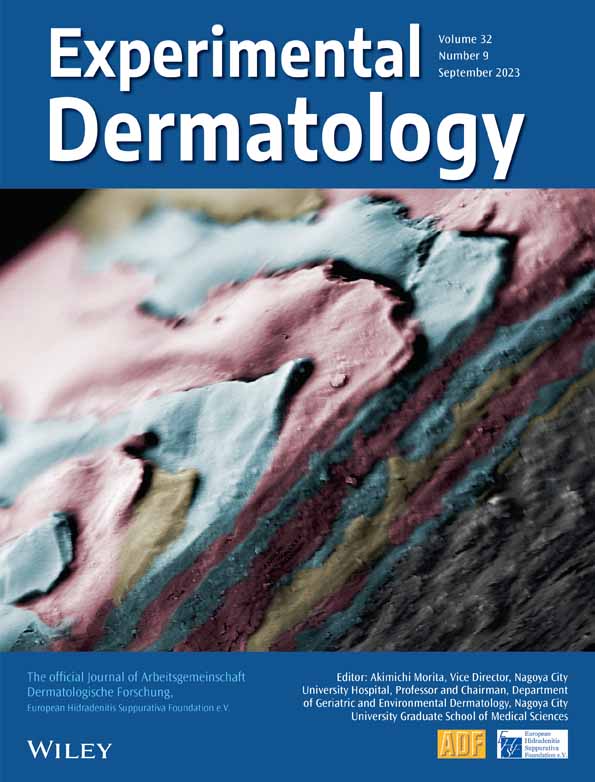Analysis of IL-10 and IL-35 in dipeptidyl peptidase-4 inhibitor-related bullous pemphigoid
Abstract
The association between immunoregulatory cytokines, such as interleukin (IL)-10 or IL-35, and dipeptidyl peptidase-4 inhibitor (DPP4i)-related bullous pemphigoid (BP) has not been evaluated. Serum IL-10 and IL-35 levels were measured in 39 patients with BP (24 males and 15 females; 6 DPP4i-related and 33 DPP4i-unrelated BP patients) and 10 healthy controls. The number of CD26+ cells in the dermis around bulla on sections was counted immunohistochemically for 12 patients (six patients with DPP4i-related BP and six randomly sampled patients with DPP4i-unrelated BP). Patients with DPP4i-related BP had lower levels of serum eosinophils (DPP4i-related vs. DPP4i-unrelated BP: 476.1 ± 234.0 vs. 911.3 ± 948.8/μL; p = 0.537) and a higher rate of infiltrating CD26+ cells (32.9 ± 7.1% vs. 15.7 ± 4.4%; p = 0.01). There were no significant differences in serum IL-10 (6.77 ± 0.24 vs. 6.84 ± 0.20 pg/mL), serum IL-35 (2.63 ± 0.17 vs. 2.63 ± 0.21 pg/mL), serum anti-BP180NC16a antibodies (67.31 ± 37.4 vs. 76.18 ± 54.59 U/mL) and Bullous Pemphigoid Disease Area Index before treatment in this study. Serum IL-10 and IL-35 levels do not increase in patients with BP and may not be a candidate for a therapeutic target for BP. An increase in CD26+ cells might be associated with DPP4i-related BP.
CONFLICT OF INTEREST STATEMENT
None.
Open Research
DATA AVAILABILITY STATEMENT
The data that support the findings of this study are available from the corresponding author upon reasonable request.




